Step aboard a captivating journey through time and discover the awe-inspiring maritime techniques of the Lucayans, the indigenous people of the Bahamas and Turks and Caicos.
Long before GPS and high-tech navigation tools, the Lucayans honed their skills in the art of seafaring, captivating even today’s sailors. With a profound understanding of the sea’s rhythms, celestial bodies, wind patterns, and avian behavior, they fearlessly navigated the treacherous Caribbean waters.
Their exceptional expertise in celestial navigation, environmental observation, lunar timekeeping, and pilotage techniques propelled them to connect islands and peoples, leaving an indelible mark on the region’s cultural and historical tapestry.
Embark on this voyage into the Lucayans’ maritime world, where their ingenious canoes, flourishing fishing practices, and enduring influence on modern Bahamian maritime activities await.
Lucayan Navigation Techniques

Long before the advent of GPS and modern navigational aids, the Lucayans, the indigenous people of the Bahamas and Turks and Caicos, perfected maritime navigation techniques that would impress even today’s sailors. They skillfully observed and understood the complex rhythms of the sea, the changing positions of the stars, the flight patterns of birds, and the direction of the wind to navigate the treacherous Caribbean Sea. Their seafaring prowess was greatly enhanced by their intricate knowledge of the environment, which enabled them to accurately predict weather patterns and ocean currents.
The Lucayans also possessed a highly developed sense of time, based on the cycles of the moon, which guided their voyages across vast expanses of open water. They used landmarks and ‘pilotage’, navigation by reference to known points on land, as primary tools for coastal navigation. This fusion of celestial and terrestrial navigation knowledge made the Lucayans successful sea navigators, connecting islands and peoples in the region.
- Celestial Navigation
- Observing and interpreting the positions of stars: The Lucayans had extensive knowledge of the night sky and used stars as navigational markers. They could identify specific constellations and use them to determine their position and direction.
- Utilizing the movement of celestial bodies: By tracking the movement of celestial bodies, such as the sun and moon, the Lucayans could estimate their position and navigate accordingly. They understood how the position of these bodies changed throughout the day and night, allowing them to plot their course.
- Environmental Observation
- Studying ocean currents: The Lucayans had an intimate understanding of the complex patterns of ocean currents in the Caribbean Sea. They observed the behavior of waves, currents, and tides to determine the best routes for their journeys.
- Reading the wind: By paying close attention to the direction and strength of the wind, the Lucayans could harness its power to guide their canoes. They knew how different wind patterns indicated the presence of specific weather conditions and adjusted their navigation accordingly.
- Observing bird flight patterns: The Lucayans observed the flight patterns of birds, which often indicated the presence of nearby land. They followed the birds’ migration routes and behavior to discover new islands or locate known destinations.
- Lunar Calendar and Timekeeping
- Using the cycles of the moon: The Lucayans developed a sophisticated understanding of the lunar cycles and incorporated them into their navigation. They used the moon’s phases and positions to determine the passage of time, aiding them in estimating distances traveled and planning their journeys.
- Tracking lunar tides: The Lucayans were aware of the connection between the moon’s phases and the ocean tides. They utilized this knowledge to anticipate the ebb and flow of the tides, which affected their navigation near coastlines and shallow waters.
- Landmarks and Pilotage
- Recognizing coastal landmarks: The Lucayans had a keen eye for identifying distinctive features along the coastline, such as unique trees, rock formations, or landmarks. They used these recognizable points as references to navigate close to the shore.
- Memorizing navigational routes: Through generations of experience and oral tradition, the Lucayans developed detailed knowledge of specific routes between islands. They relied on this accumulated knowledge to navigate efficiently and safely between various destinations.
The combination of celestial navigation, environmental observation, lunar timekeeping, and pilotage techniques enabled the Lucayans to master the art of navigation in the Caribbean. Their expertise allowed them to explore and connect different islands and communities, shaping their cultural and historical significance in the region.
Canoe Construction
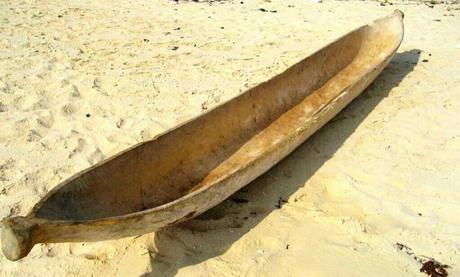
When it comes to the Lucayans’ maritime practices, the construction of their canoes was one of their most notable achievements. They meticulously carved large dugout canoes, or ‘dories’, from a single log, usually of the Cottonwood tree, known for its lightweight and buoyant properties. The design was sleek and efficient, maximizing speed and stability in the often turbulent Caribbean Sea.
The building process of these canoes was a communal effort, which included the participation of skilled craftsmen, elders, and other community members. It was also a ritualistic process, embedded with spiritual significance. These canoes could carry up to 70 people and their cargo, including their catch, tools, and trade items, highlighting their critical role in Lucayan society.
Fishing and Trading Practices
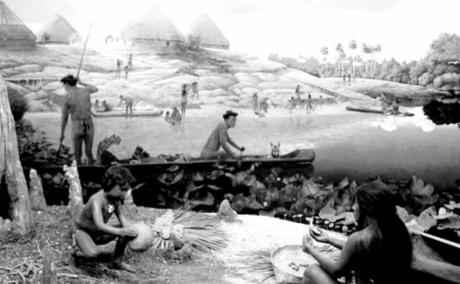
Lucayan society thrived on a mixed subsistence economy of fishing, agriculture, and trade. Fishing was paramount, and their catch included a variety of species such as snapper, grouper, and parrotfish. Their methods were diverse and included line fishing, net fishing, and even free diving with hand-held spears. Interestingly, they employed fish weirs and traps, some of which bear striking resemblance to modern Bahamian fishing techniques.
Trade was a vital part of Lucayan life, facilitated by their proficient maritime skills. They traded commodities such as foodstuff, pottery, ornamental objects, and tools within the archipelago and with neighboring islands, fostering regional interconnectivity. Their maritime prowess opened up avenues of cultural exchange and economic opportunities that were crucial to their prosperity.
Influence on Modern Bahamian Maritime Activities
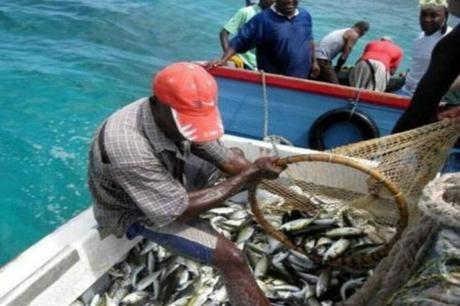
The Lucayan influence on present-day Bahamian maritime practices is substantial and enduring. Today, boat building is still an important cultural and economic activity in the Bahamas. Contemporary designs echo the streamlined shape and function of the Lucayan canoes, demonstrating the legacy of their efficient design.
Similarly, the Lucayan’s reliance on the bounty of the sea still resonates in modern Bahamian society, where fishing remains a critical part of the local economy. Techniques pioneered by the Lucayans, such as the use of fish weirs and spearing, are still practiced today. The spirit of the Lucayans is also alive in the islanders’ sense of community, which is evident in communal fishing and boat building activities. These practices provide a tangible link to the rich maritime heritage of the Lucayans and a testament to their ingenuity and resilience.
- Boat Building
- Cultural and economic significance: Boat building continues to be an important aspect of Bahamian culture and economy. The craftsmanship and design principles of Lucayan canoes have had a lasting influence on contemporary boat designs in the Bahamas.
- Streamlined and efficient designs: Modern Bahamian boats often reflect the streamlined shape and functionality of Lucayan canoes. The emphasis on efficiency and maneuverability is evident in the construction and design choices of local boat builders.
- Fishing Techniques
- Continuation of traditional practices: The Lucayans’ reliance on fishing as a means of sustenance is still ingrained in Bahamian society. Many traditional fishing techniques, such as fish weirs and spearing, have been passed down through generations and are still employed by local fishermen.
- Community-oriented fishing activities: The communal spirit of the Lucayans lives on in modern Bahamian fishing practices. Community fishing events, where multiple fishermen come together to cast nets or fish in specific areas, serve as a testament to the shared heritage and cooperative nature of maritime activities.
- Connection to Maritime Heritage
- Preservation of cultural identity: The continuation of Lucayan-influenced maritime practices serves as a tangible link to the rich maritime heritage of the Bahamas. It allows present-day Bahamians to maintain a connection with their ancestors and their traditional way of life.
- Ingenuity and resilience: By embracing and perpetuating the maritime traditions of the Lucayans, the people of the Bahamas showcase the ingenuity and resilience of their predecessors. It is a testament to the enduring impact of the Lucayans’ navigational skills and their ability to adapt to and thrive in their maritime environment.
The enduring legacy of the Lucayans in Bahamian maritime activities highlights the cultural significance and practical wisdom of their traditional practices. Boat building, fishing techniques, and a sense of community all contribute to the preservation and celebration of the maritime heritage that the Lucayans established centuries ago.
Predicting Weather and Ocean Currents
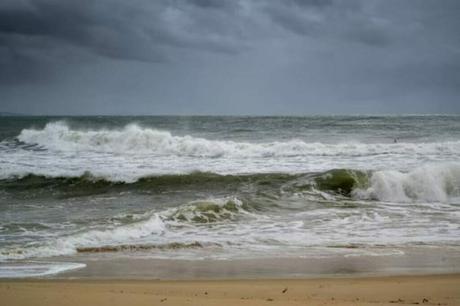
The Lucayans had an extraordinary understanding of their marine environment, which was critical for their successful navigation and survival in the Caribbean Sea. They meticulously observed changes in the natural world around them to predict weather conditions and ocean currents. Their understanding was so nuanced that they could forecast upcoming storms or calm weather days merely by watching the behavior of certain marine species, the color and patterns of the sea and sky, and the direction and strength of the wind.
Further, the Lucayans had a deep knowledge of ocean currents, derived from countless generations of seafaring and close observations of the marine environment. They knew the patterns of warm and cold currents that swirled through their island chain, the influence of the tides, and how the sea’s behavior changed with the seasons. Their understanding of the ocean was comprehensive and holistic, encompassing both the rhythms of the sea itself and its relationship with the broader climatic patterns. This deep-seated maritime wisdom guided the Lucayans on their voyages, sustaining their vibrant culture and thriving trade networks across the Bahamas and beyond.
Lucayan Maritime Practices FAQ
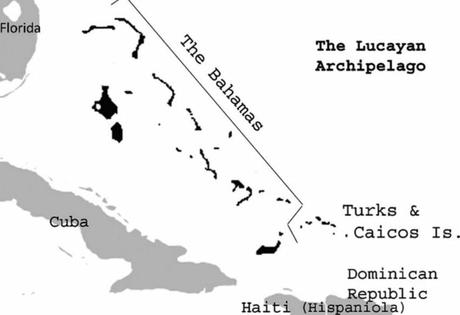
Where did Lucayans come from?
The Lucayans were indigenous people who inhabited the Bahamas and the Turks and Caicos Islands. They were part of the larger Arawak-speaking Taino culture, which originated in South America. The Lucayans migrated northward and settled in the Lucayan archipelago around 800 AD.
What are the Lucayan people now?
Today, the Lucayan people no longer exist as a distinct population. Following the arrival of Christopher Columbus in the late 15th century, the Lucayans faced enslavement, forced labor, and diseases brought by the Europeans. As a result, their population declined rapidly, and they eventually became extinct. The current population of the Bahamas and the Turks and Caicos Islands is composed of diverse ethnic groups.
What race were the Lucayans?
The Lucayans were part of the Arawak-speaking Taino culture, which is believed to have originated from Indigenous peoples in South America. They were part of the larger Amerindian racial group, characterized by Mongoloid physical features. However, it is important to note that race is a complex social construct, and the categorization of individuals based on physical characteristics does not fully capture the diverse cultural and genetic heritage of the Lucayans.

